|
The Policeman from last night was so nice he said he'd let me record the siren on his truck if I visited the station. Never one to pass up an opportunity like that we headed to the local station before we left town and I made sure I got a good recording of the police siren. Its so much better doing this out in the country where its nice and quiet. City background noise gets in the way of everything. Now all I need to do is talk to a fire man and ambulance driver. Apart from the siren it was a pretty uneventful drive home. Back to normal life tomorrow. Looking forward to the next fun trip.
0 Comments
Lots of driving today. We left Lake's Entrance and decided to head over the mountains towards Bright and Myrtleford. I have never driven this way and it was really interesting. Lots of lovely countryside. When we reached the top of Mount Hotham they had one of the chairlifts going, so we decided to catch a ride up and have a look around. We then walked back down as it was only a short chairlift. This was an unexpected but really good opportunity for recording as usually the lifts don't work unless its ski season, and during ski season there are tons of people around making noise, so not only did we go for a ride, but I recorded some good material. We continued over the mountains and stopped in Harrietville, which is one of my favourite little towns, we had the best scones we have had in ages at the Lavender farm there. It was a beautiful outdoor setting which was perfect on a fine sunny day. We drove through Bright and stopped for the night in Myrtleford. After a great dinner I went out wandering around to try and record some crickets. I had very little luck as there were a lot of other sounds around anywhere the crickets were, but I did record a great sound from a broken street light that was humming quite loudly, it felt very Twin Peaks, standing under a humming street light on a road in a country town in the middle of the night. The local Policeman came past and wondered what I was doing. He was great and when I explained what I was up to he was cool with everything. The weather was not great today, so we decided to head to Buchan and check out the cave network there. Unfortunately for us so did everyone else within a 50 mile radius. The cue was so long we took one look at it and decided to pass. We wandered around the area for a while and then drove back to Lake's Entrance. By the time we had gotten back the weather was clearing so we thought it would be good to take out one of the hire boats. We had looked at them yesterday and now the weather was finally good enough to enjoy the trip. The boats are very small with inboard engines that put put like something out of an old movie. Anna was enjoying driving the boat which left me free to record the engine and even drop the hydrophone into the water and record the wake of the boat as well. We headed out into the lakes area and that's where things started to go not so well. As we headed out into the lakes area the engine started to cough and splutter a little. I thought it might be struggling with the waves a little so we tried to steer a course that might make it easier, but after a few minutes it was obvious this boat had some serious problems. We were just thinking about turning around when the engine failed completely. Of course we were located perfectly where we had no mobile phone reception, so we couldn't call for help. I restarted the engine with the little crank handle and it ran again for about a minute. I then repeated this process about 40 times over the next half an hour as we tried to limp back to where we hired the boat. At the time it was very frustrating and I did vent a bit to the open sky, but the result was a whole bunch of samples of a really crappy boat engine that will work very nicely in the library, so I guess there was a silver lining to today's cloud. We finally got back into mobile phone range and the owner came out and towed us back in. He was very apologetic and gave us a full refund, so I guess it wasn't too bad. I was determined not to let this spoil our holiday. Anna had wanted to visit a place called Mitung which was just down the road and apparently very pretty so we went for a drive before dinner and I am really glad we did. What waited for us is probably the most beautiful sunset I have ever witnessed. It was a wonderful way to finish the day. I also realised something important Humans write music because there is no sound in nature with the beauty to accompany its most magnificent scenes. Music is humanities greatest gift to the universe In what is becoming a bit of a tradition Anna and I hired a car for the Easter break and picked a random direction to head in. We did this last year and despite everyone telling us there is no way we would get accommodation anywhere without booking ahead we had a fantastic holiday and wandered aimlessly around Victoria for a few days. We decided we would try our luck for another year, so Thursday night all packed and ready we headed down to Philip Island on Western port Bay. The Thursday before Easter is usually easy to get accommodation as many people don't head off till Friday. We managed to get a hotel room directly across from the beach which was nice. On the Friday we had a wander round the island. I was disappointed the weather was so nice as I thought I might be able to record some good wave noises near the blow-hole, but the sea was virtually calm. Easter is a holiday for us, so I don't specifically go looking for sounds, but as always I have the gear in the car and if something offers itself I will take the opportunity to capture interesting sounds. Anna is amazingly patient which makes things easier. We got to see a lot of things today including a farmer market just off the main island, some very large Pelicans being fed on the mainland and lots of fantastic green grass and trees, which living in he city has made a real novelty. The only thing I got to record today was one of the horses near the farmers market. There was a lot of background noise from visitors and campers so all I got was a single horse snort. Its a very good snort, but it is not much for an entire day's exploring. Oh well, we'll see what happens tomorrow.
Location Cape Shanck Equipment Zoom H4N Rode NTG3 Boom Pole Array and Zoom H4 Sennheiser MKH60 DPA 4061 Mounted Well it took a couple of weeks to organise, but as promised today I went to play with some tanks. I was worried the weather was going to betray me again, but it turned out to be a fantastic day. (so nice I got sunburned again even though I used sunscreen). We drove down to the Mornington Peninsular where there is a ranch where you can go for rides in the tanks. Today was a member’s only event for the Victorian Military Vehicle Corps, but I had gotten prior permission so we were allowed to come along. The first thing I noticed was that there were a lot of vehicles around and that there was no way I was going to be able to do a full recording of all of them. I had come for tanks so I thought I would concentrate on them, and anything else was just icing on the cake. The main tank on the property was a British Centurion tank. This was one of the most widely used tanks since World War 2. Originally of British design, Australia used them in the Vietnam war. They were active around the world from 1945 right up to the 1990’s. I have no experience with recording tanks, so it was a day of trial and error. I mounted some mics onto the back of the turret on the Centurion. There is a cage at the back that I think is used to carry jerry cans of water or fuel. The good thing about the cage is that if any of the mics came loose they would fall into the cage and not get lost. Also the cage was positioned pretty much right over the main engine so it was a good location. I used the Zoom H4 as I wanted to keep the H4N on me. I mounted one of the DPA 4061 mics and then strapped the MKH60 in its blimp cover to one of the cross bars with a roll of Velcro tape I had recently bought. I think this Velcro is going to be really useful in the future. I had had really good timing this week as my new Rode blimp had arrived just on Friday so I could use both the MKH60 and the Rode NTG3 in blimps which was excellent. I think I will need to make future trips just to get a full recording of this one tank alone. I did capture some excellent material, but I would like to grab some more sounds of the caterpillar tracks isolated from other sounds.. The Centurion was not going to be used till much later in the day. One issue with a casual event such as this is it is difficult for me to plan what to do and when. I might have been able to use the mics on other vehicles, but I was determined to get a good recording of the centurion so I left those mics where they were and used the NTG3 and H4N for everything else. I did spend quit a lot of time chasing after vehicles, standing behind them when they were idling or positioning myself on corners to catch them as they zoomed past. One of the club members has an air force Humvee which I think I am going to do a feature on as it’s an excellent example of a modern military vehicle. (And sounds great) There were also lots of jeeps and a couple of land rovers which I decided to leave for future dates. I did capture quite a bit of material from an FV603 Saracen APC. This is a British made vehicle used from the early 1950’s to the late 60’s. The Saracen had an entirely metal suspension system which on a vehicle this old meant it squeaked and creaked a lot. This might not be good for creeping up on the enemy, but it certainly made it sound more interesting. This one had a little trouble starting up and they needed to use another armoured car to jump start it. I even captured some material inside the Saracen by setting my R09 recording it and asking a young guy to hold it for me while he went for a ride, he was happy to help and I got some good material. Two gentlemen had a converted Bren Gun Carrier that their grandfather had built years ago. It had had a lot of the armour removed from it so it could be used for farming, but it still operated well and sounded really good. They kindly took me for a ride in it. The small size of the carrier allowed me to lean over the front and capture some sound from a different angle, as well as the usual close micing of the engine. The tracks on the Bren Carrier were quieter than I expected, that might have been due to the vehicle being a lot lighter than a full sized tank. The engine overheated a little towards the end, but it was a tough little tank and had a very distinctive sound that I liked. Between riding in it and following it around for a while I think I probably captured as much of that vehicle as I would ever need, so it was good to get such a good range of sounds without needing to attach extra mics to it. I managed to grab some snippets of other vehicles during the day. A tank transport truck, a Ferret armoured car, the siren of a US Army Jeep. These were simple captures made by positioning myself in a good position and recording with the NTG3 on the boom pole. The pole itself is handy for quickly changing positions and allowing me to angle the mic under a vehicle, or close to its exhaust or from above. Once I have captured some material from one angle I will usually walk around the vehicle to test how the sound changes. Some vehicles produce a very different sound from different angles. The exhaust usually has much more low frequency material where as the front end will include the sounds of cooling fans and drive belts that can’t be heard elsewhere. I can’t always capture every angle, but when I have time I captures as much as I can. The boom also allows me to position the mic closer to where a vehicle will be when it comes around a corner. As much as I don’t want my equipment getting run over, it is a much better option to have a tank run over one of my mics than to run over me, so it can be a good safety function as well. When it came to the Centurion tank I made sure I was on top of it when it started up. It has two engines, a secondary engine that is used to power a lot of the electrical equipment on board also helps start up the primary engine. I captured a good clean sequence of the secondary engine starting up and running for a few minutes before the main engine started. I also captured the main engine from several positions before they started moving the tank. The attached mics captured a good constant amount of material as the tank was driven around. This combined with me following the tank with the boom pole gave me a good mix of close and distant mic samples. The only thing I really missed was some good track movement noise. I think next time I will mount some mics right at the front of the tank on the track guards just over the front curve in the tracks. This should be far enough away from the engine at the rear to capture some good clunks and squeaks from the tracks without too much engine noise. This was a good lesson to learn, but even if I had known this beforehand I didn’t have a third recorder with me on the day anyway so I wouldn’t have been able to do it all in one recording. I am happy with what I did capture, but a tank is a complex enough vehicle that I think it requires more mics that a standard car or truck. These are all good lessons to learn for next time. The final vehicle for the day was the Sherman tank. I only captured this one with the boom pole setup as I didn’t have time to transfer the mics from the Centurion onto the Sherman, but I still got some excellent material. The Sherman has a new engine in it as it was restored to use in a movie. The engine is a massive and noisy thing that produced the most amazing sound. This combined with the tank’s driver who was very good and could control the vehicle as well as any racing driver provided an incredible series of sound samples. Tanks are also very interesting to record from a distance, and the property allowed the tanks to be 300-400 meters away behind a small hill. The main thing I noticed is that when a tank is moving away from you, you can hear the low frequency rumble of its exhaust, but when a tank is travelling towards you, you hear far more of its track squeak than its engine. I suspect this information is something that a lot of soldiers around the world are very aware of and use as a survival skill. It is important to point out that sound over distance change a lot more than just getting quieter. While you can simulate a distant sound by playing it at a lower volume most sounds change dramatically as certain frequencies are easier to hear over distance. So when you are recording it is worth capturing distant samples as well if it is possible and practical.
I plan on meeting with the people from VMVC again and eventually archiving as many of their vehicles as possible. Not only are military vehicles something that are popular subjects fro films and games, but they often have very distinctive and interesting sounds, so I think the time will be well spent, not to mention its loads of fun. Website www.vmvc.org.au/ Location
Warburton Equipment Zoom H4N MKH60 Single hand setup We went for a drive out to Warburton today, just to enjoy some countryside and good food. We stopped briefly at a place called The Peninsular Tunnel, which is a point where the course of a river cuts through a cliff face creating a tunnel. It was a nice area with a water hole where people could swim, and it produced a nice natural reverb as the water traveled through the tunnel. I recorded a little of this before we headed up to the Upper Yarra Reservoir. One the way back through Warburton they had a replica water wheel at the information centre so I recorded some of that as well. It was mainly just a day to relax, but it took so little effort to grab the couple of sounds that I recorded that it would have been very lazy of me not to. Location Horsham Victoria Equipment Zoom H4N Built in mics and DPA 4061 pair 4 days, 2000 km, 5 sets of batteries and about 10 gig of raw material. With Tuesday the 3rd of November being a public holiday I decided to take the Monday as well and have four days straight to go on a recording trip. Anna has a business trip up in Sydney anyway so it’s a good use of the time. I drove to Adelaide to visit my brother and sister in law and capture a range of different material over the four days. I drove to Horsham on Friday night (about 300 km from Melbourne) The first opportunity for the day was at the hotel I was staying at. They had a large birdcage with a few unusual birds in it, the most distinctive was an Indian Ring Neck Parakeet, which was a very unusual blue green colour. It was quite noisy so I thought I would record some samples. Of course as soon as I went near its cage with the recording gear it stopped completely. A lot of animals and birds are very wary around people in general and even domestic pets can be worried about people they don’t know. The simple solution to this was to rest the H4N on a pot plant next to the cage and go for a walk. 10 minutes later I had collected a good collection of material. I could here the bird from where I was sitting out of view around the corner. I realised some time ago that often the best way to record something was to not be around. I plan on doing a similar thing on our balcony back home, set up the recorder, drop a bunch of birdseed, and then go inside and wait for the birds. As usual I had hired a car for the trip. This time I got a Ford Focus which I have not driven before. It was also the first trip since I picked up the new DPA microphone set I had purchased, so it was a good opportunity to get some sounds from the Ford and test out the mics. After breakfast in Horsham I set up the mics on the car. One clipped close to the exhaust and the second one clipped under the bonnet to a coolant pipe. The leads on the DPA mics are very fine and quite fragile so I made sure they were tapped down securely. I also had an issue with some of my rechargeable batteries going flat very quickly; I think they might be nearing the end of their usable life. I’ll swap them over and use them for my XBox controllers instead. Once the mics were in place I did some basic tests at low speeds around the streets of Horsham to get my levels right and test for wind noise. The DPA set comes with some small foam windshields, but I also bought two Rycote fluffy wind covers as I plan on using these mics for a lot of vehicle recordings. I got some good material driving along the highway, a long country trip is a good time to do car recordings as highways usually have consistently higher speed limits for a long distance, also the roads to Adelaide are often not very busy so I was able to capture a lot of material with no other vehicles on the road. I did stop regularly while I was recording to check the position of the mics and how they were coping. After spending over $1500 on new mics the last thing I wanted to was for them to fall off while I was driving at 110km p/h. I am going to record some more sounds of the Ford Focus over the weekend to try and get a full set of sounds for it including doors, horn controls etc. I am also thinking of starting a new review section where I review a car from the sound point of view and a score it based on how good it sounds when recorded. Completely useless for most things I know, but it might be fun once I start to get access to things like sports cars and classic cars. Location Willowmavin Victoria Equipment Zoom H4N MKH60 &D112 Single handed setup Today I got to meet Edgar. Edgar must weigh over 150 kilos, he’s so big he has trouble walking in the morning. Edgar is a very large, but very friendly pig! Edgars Mission is a farm setup by a woman called Pam Ahern as a sanctuary for animals. Pam, with help from some volunteers and her mum run the farm and take care of all the animals there. Many have been rescued from bad circumstances are given a last minute reprieve from being sent to an abattoir or knackery. Pam’s love of her animals is so apparent in the hard work and care she puts into caring for the animals. It’s also apparent in how happy most of the animals appear. There was very little of the guarded cautious nature of the animals, most of them would rush to meet Pam every morning and instantly knew her voice. These animals would all live out their lives naturally with no threat of being eaten. While I do now eat meat, I spent over ten years as a vegetarian so I can really understand Pam’s desire to care for the animals. The farm itself is designed to encourage people to understand the lives of the animals without being preachy or judgemental. Pam wants the experience of visiting the farm to be positive for everyone. From my point of view it was a great way to spend the day and I got lots of really good animal sounds. Edgar alone is very conversational, and pigs have quite a range of different sounds that they make. I followed Pam around for the first couple of hours of the day while she fed the animals. (I got up at 6am to get out to the farm for feeding time, I HATE getting up early.) Feeding time is probably the best time to get animal noises because they will all generally be fairly vocal when they are hungry. Pam’s relationship with her animals resulted in them being even more vocal a lot of the time. Most herd animals will communicate with other members of their herd. Taken out of the herd and isolated many animals will be much less vocal. I think most of the animals on the farm treat Pam as one of the family so they “talk” to her as she goes about her days work. The pigs were definitely the highlight of the day for me, I don’t have any pig sounds in the library so far so it was good to get some material, but what I got was a ton of grunts and snuffles and long groans and grunts. There is enough material from the pigs alone to create entire conversations. Not to mention that a lot of the pigs vocalisations will be great for creating monster and giant beastie sounds. Pigs are also quite noisy when they eat so I will have plenty of sounds of munching and crunching beasts. The pigs were also really friendly. A little one called Hamish was very happy to chat to me and wanted me to scratch his shoulders. Pigs are really smart animals and it was great to get up close and be able to observe some for a while. Next was a couple of young sheep, and some baby goats who were of course all hideously cute. Lambs and kids can sound really bad when they are panicked or really hungry. Their call is almost desperate and sounds like a child screaming. Most of what I recorded was fairly friendly “come and play with me” calls. Although like many animals when you put a microphone close to them they decide to be very quiet. I think its because they are curious of the fluffy cover and animals seem to ponder quietly when they are curious. I used the H4N strapped to the blimp cover of the MKH60 for the day. This single handed setup allows me to record with several mics simultaneously while still only using one hand. Since I lost the Shure Beta58 :-( I have been adding the D112 to the setup, but it is essentially useless unless I am recording loud output sounds. I include it simply as a backup, if something explodes then I have an active mic that will pick up a loud sound without distorting. Until I can organize to replace the beta58 it’s a best use of the free channel. I have just ordered 2 of the DPA 4061s so it will be a while before I can replace the Shure. The great thing about being able to get right up and close with the animals was that I could get really clean recordings directly from their mouths rather than across a paddock or through a cage like most other animal sanctuaries. This was especially good for recording the eating sounds as they munched and snuffled through their food. Event he lambs and baby goats sucking on their milk from baby bottles. These sounds would not have been possible without getting this close to the animals. It was also really great to be able to get so close and to pat and talk to the animals. It was not all perfect though. The turkey stubbornly insisted on only making sounds when the mic was off or I was too far away to get a good recording, and the cows were also very quiet. Cows in general seem to not make a lot of noise in my experience, or maybe they just don’t make noise when I am around. I have never expected to go out and capture every animal that exists at any one location I visit, generally if I get some good material from one kind of animal on the day I consider it a successful day. Today was just like that, I got lots of excellent material from the pigs and also got some good stuff from some of the other animals. Going by my averages today was a very successful day. Patience is a main part of what I do and so I will wait for some other day to captures some noisy cow sounds. It was just really nice to be out in the country on a beautiful sunny day recording animals. If I could do this everyday I’d be very happy. Website www.edgarsmission.org.au/ One final recording for today was back in Melbourne, Williamstown to be exact. I have passed by the refineries down near the ports on several occasions when they have the burn off flames at the top of the very high exhaust towers, but I have never had my equipment with me when I have seen them burning. Today I got the chance to record some material as they were burning off as I passed. I could only get within about 200 meters for safety reason but the sample is still quite good. I think if I was able to get closer there would be more texture to the sound as the flame fluctuations would be more noticeable, but still the sound was quite powerful and sounded like a very large jet engine.
Location Taminick Victoria Equipment Zoom H4N Shure Beta 58A AKG D112 and Zoom H4 Sennhieser MKH60 Tripods, mic stands and R09 Well Victoria is still conspiring against me as far as weather is concerned. Most of the two hour drive up from Melbourne was it he rain, but it does stop every now and then so I will probably be able to record some material today. Today I am working with the North East Muzzle loading club about two hours north of Melbourne. The club is a group of people who are all interested in historical firearms. This includes a variety of black powder firearms including pistols, rifles, shotguns and even canon. Some of the designs date back over two hundred years. Because of the technology involved they produce very different sounds from modern fire arms. For an event such as today I brought all my equipment as I want to capture as many different versions of the events as is practical. Different microphones and different positions will result in different qualities of sound being captured. From previous experience I have a better idea of how I should place some of my mics, but every time I do this I learn new things, so its always useful to write down what I did and what was good or bad about the results. The shotgun microphone was setup on the tripod with the H4 attached. I was happy to use this as an off target mic for the day. The shotgun is far too sensitive and directional to point directly at firearm when its discharged, and I find it is generally better when placed further back. I often point it “up range” in the direction of where the firearms will be shooting. This allows it to capture the echoes of the distant hills and trees, while still capturing some of the initial bang sound. The MKH60 is very good at capturing the low end frequencies and I find when I mix in the echoes it gives me a good warm aspect to the sounds. I am still trying different positions for my other mics. Today I decided to place the D112 on a mic stand with a boom and position it very close to the firing positions. This would be the closest mic to the firearms, but it was still positioned at the back end of the weapons, closer to the firers’ head. It will take a very sturdy mic to be able to cope with being placed right at the muzzle of a firearm when ti goes off. I placed the beta58A on a small tripod and positioned it on the ground behind the firer. This was more experimental than with any real intent for results. The H4N’s inbuilt mics were also active and set to capture a general ambience. I also activated the R09 with its internal mics, but the lack of a wind cover meant that most of the material it would record would not be usable. I still have more mics than wind covers so when I deploy them all I need to hope there is no wind around. Today was very windy so it’s a good lesson to get some more covers soon. The first event of the day was the firing of a 100 year old howitzer. One of the old members of the club had asked to have his ashes fired down range as his way of being laid to rest. There were several speeches and some bagpipes played. It was a solemn but also enjoyable event, and reflected the character of the gentleman that had passed on. I was worried about capturing a sound I had never heard and would only get one chance to record. I set my mics in a variety of positions, but more importantly I set them with a variety of input levels so I increased my chances of capturing as much usable material as possible. I was pretty lucky as the levels on most of the mics seemed to be pretty good. It’s not every day I get to record 100 year old canon unfortunately. The rest of the day I managed to record a variety of old firearms from pistols to rifles and shotguns. I moved the mics around occasionally to capture different aspects of the sound. I always think about the idea of marking exactly what mic was in what position at what time, but invariably these events become disorganised and I am often struggling just to find out what model of firearm is being used, setting my levels appropriately and making sure everything is working as expected. I was lucky enough to be given the chance to fire a “Brown Bess” which is the nickname given to the long arm musket used by the English in the Napoleonic war and the American war of independence by both sides. I was very surprised to find it has no recoil at all. It was very interesting to fire such an old weapon and I got a good recording because I could position myself well in relation to the mic. I also got to fire an old cartridge rifle which was fun, but showed I am way out of practise as it has been over ten years since I last fired a rifle. I know it was very windy, but my aim was terrible. The final part fo the day was another canon being fired. This was a much smaller field gun, but it still made a good bang. Again I aimed the shotgun mic downrange, but this time I positioned the D112 slightly in front of the canon to try and capture a more direct sound. It was raining by this stage so it was not very practical to move the mics between shots which was a shame. I spent all my time looming over my mics trying to keep the rain off them.
The final lesson of the day was to check off my gear thoroughly when I am packing up. Since I got home for the day I have discovered my Shure Beta58A is missing. I really cannot imagine myself putting it down somewhere and not seeing it, but I must have been distracted when I was packing up. I have since contacted the club and maybe it will turn up, but I am really annoyed at myself for not being more thorough with my pack up. If it does turn up it will have spent two weeks out in the weather which may not do it any favours. I am quite disappointed about this as it was a good study general purpose mic, and I certainly cant afford to replace it right at the moment as I am planning on getting some hi input mics to use on car recordings. So it looks like I may have learnt a good lesson, but at a fairly high price. I would like to thank everyone at the club as they were really friendly to both Anna and I, and I was really happy to get a chance to fire a couple of rifles. John who had organised the initial contact and mike who taught me how to fire a musket were especially helpful. I hope to get up to Taminick in the future and maybe try and record some more canon and maybe some ricochets by placing my mics up range. I am sure that will be full of interesting challenges as well. Location Mt Dandenong Equipment Zoom H4N Beta 58A and MkH60 One of the things I love about my wife is, that not only does she tolerate me wandering around recording everything I can get my hands on, she actively encourages it. This weekend we stayed in a fantastic little hotel in the mountains to get away and celebrate our anniversary. We went for lots of nice walks in the forest and had some fantastic food at some of the really excellent restaurants in the area. But I also captured some good sounds because Anna insisted in saying hello to some dogs and making them play and bark, and we also found a few water birds in Emerald Lake. Anna even went to the café to ask for some old bread to feed the birds with in the hope it would make then noisy. I learnt something, which on reflection should have been really obvious. Assuming you can actually get close enough to the animal in question a vocal microphone such as the Beta 58A is far better for recording animal sounds that the shotgun mic I use. Considering that many animals have similar vocal qualities in their calls to humans it should be very obvious that a microphone designed to record human vocals would be good for animals, but it was only after listening back to my captures that it really dawned on me. In Olinda I managed to record two dogs in someone’s front yard, a female Dalmatian and a male miniature Poodle. Anna would distract one of them from barking by throwing a stick for it so I could record the other and then we would swap. The dogs had a ball and I captured some really excellent clean recordings using the Beta 58A right up close like I was interviewing the dogs. By comparison on Sunday I was using the MKH60 shotgun and we came across a beagle. Another really friendly dog, but she would bark every time you walked away from her. This allowed me to record plenty of material, but the shotgun was so sensitive that it picked up a lot of wind noise from the trees and other sounds. I had decided to use the shotgun to capture the bird sounds around the lake as there was no way I was going to get close enough to record them with any other mic, but it really looks like I should keep the 58A in my pocket at all times as its far better for the rare occasions when I do get close. I carry my entire mic set-up in the new backpack I have in the car, but its a bit bulky to carry around everywhere when I am recording and I am also aware of the extra noise it might generate. There’s always a compromise somewhere.
|
AuthorStephan Schütze has been recording sounds for over twenty years. This journal logs his thoughts and experiences Categories
All
Archives
April 2019
|
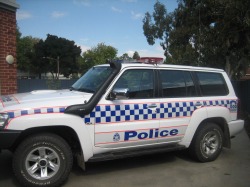
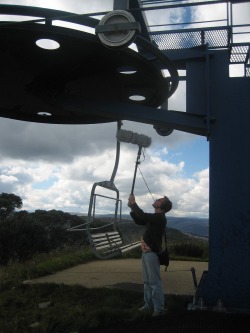
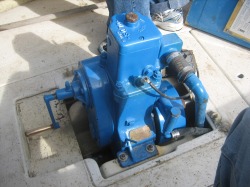
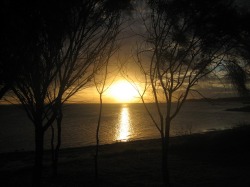
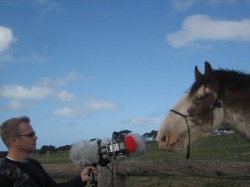
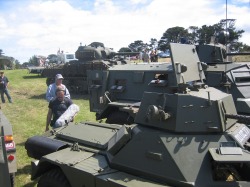
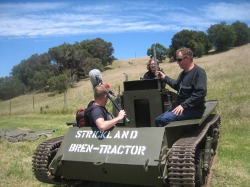
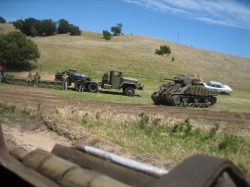
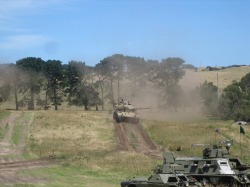
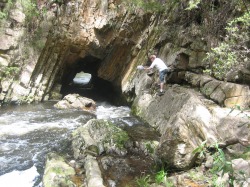
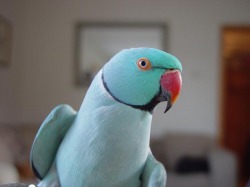
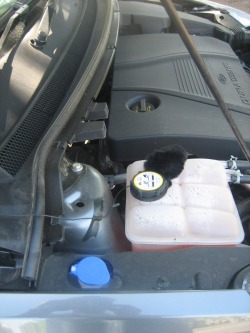
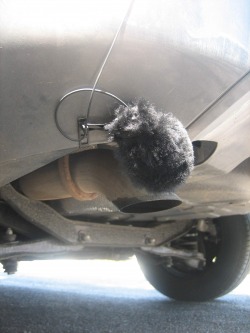
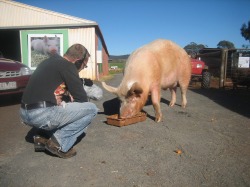
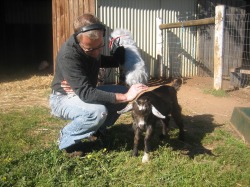
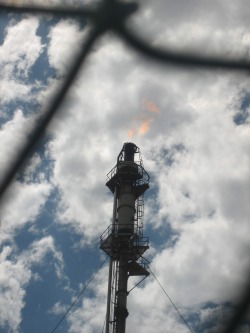
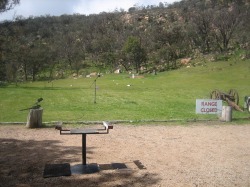
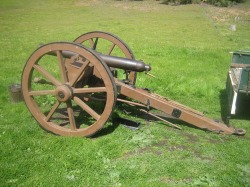
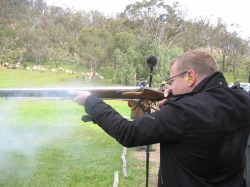
 RSS Feed
RSS Feed
